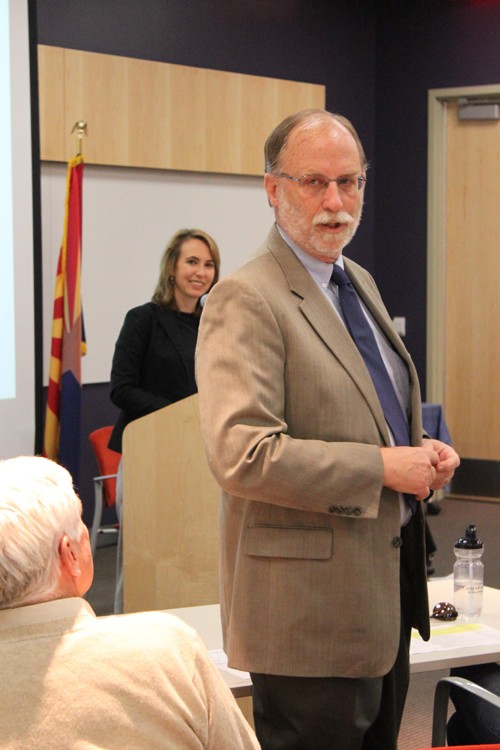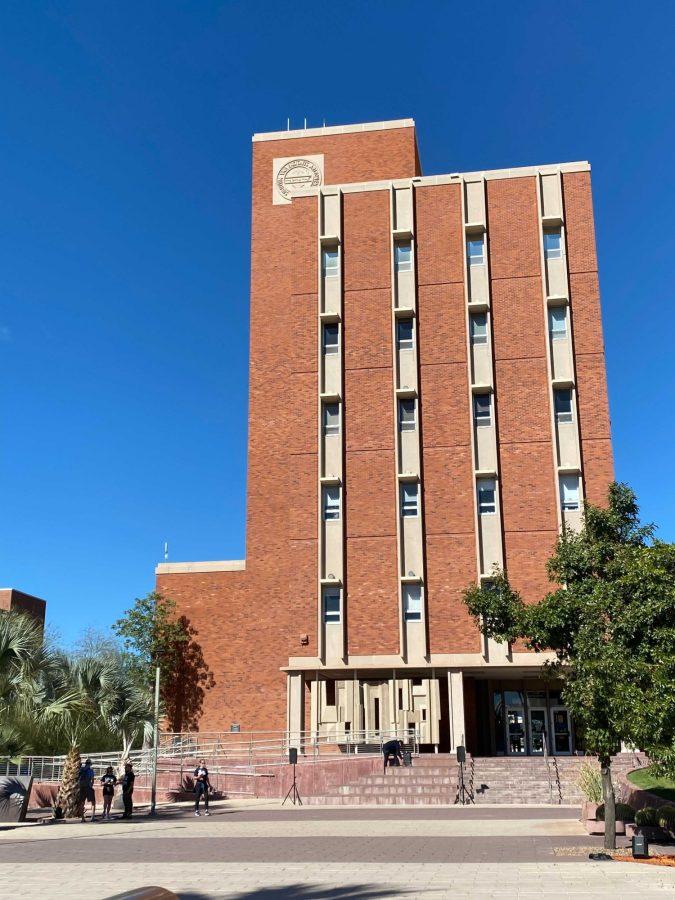U.S. Representative Gabrielle Giffords spoke Monday afternoon at a presentation of University of Arizona research funded by the American Recovery and Reinvestment Act.
Giffords gave a brief presentation on the importance of promoting higher education at both the state and national level and conveyed her continuing support for the ongoing research the university is performing.
Following her presentation, Giffords asked researchers in attendance to stand up and be honored for their groundbreaking work.
“”The best way that we can get our country back on track is to continue to lead the world in research and investment into what you all do here at the University of Arizona,”” said Giffords.
So far, the University of Arizona has received $82 million in stimulus funding for 125 research projects since President Barack Obama signed the American Recovery and Reinvestment Act into law last February.
In addition to funding research, federal stimulus funds distributed through the Reinvestment Act have contributed $500 million to the southern Arizona economy.
Several UA researchers at the presentation expressed their gratitude for public tax dollars to aid them in their research.
“”We will make every effort to ensure that we provide back to our taxpayers exactly what the stimulus package is meant to provide — jobs, workforce, development and more knowledge and innovations,”” said Leslie Tolbert, vice president for research at the UA.
Tolbert said funding from the Reinvestment Act stimulated the biggest wave of research proposal writing at the UA to date.
“”Despite extremely stiff competition throughout the country, researchers at the UA have been very successful in winning stimulus dollars,”” said Tolbert.
The 10 largest UA stimulus awards amounted to a combined total of approximately $41,223,181, and included scientific research in fields such as chemistry, astronomy, hydrology and healthcare.
Tolbert went on to explain that the federal administration considers several factors when deciding what research projects in which to invest stimulus funding.
The first and most important of these factors is the ability of proposals to create and retain jobs.
As of September 30 of this year, stimulus-funded research at the UA provides for at least 157 jobs, said Tolbert.
Also, the funding provided by the federal government is designed to bolster the workforce America needs to maintain its prominence in the fields of science and engineering.
Tolbert said international competitors such as China and India are threatening to eclipse the United States as the world leaders in scientific research.
“”Stimulus funds are preventing — for at least the next two years — the United States research machine from stalling out,”” said Tolbert.
The largest stimulus-funded program at the UA is an Energy Frontier Research Center under the directorship of chemistry professor Neal Armstrong.
Armstrong was awarded $13 million from the U.S. Department of Energy for his proposal on developing cheap and reliable photovoltaic cells that could potentially help lay the groundwork for fundamental advances in solar technology.
“”Current solar photovoltaic technology can produce a watt of electricity for between 30 cents to a dollar,”” said Armostrong. “”Our goal is to develop a technology that gets close to the cost of coal which is four cents per watt.””
Marcia Rieke of the Steward Observatory was awarded the second highest grossing research proposal.
Rieke was awarded $10 million for continuing work on the Next Generation Space Telescope that will continue to address the formation of galaxies and stars and to monitor planetary systems from inception to maturity.
In addition to providing some of the leading research in their respective fields, stimulus-funded research proposals are providing students with the chance to participate in research that would otherwise be unavailable to them.
“”American Recovery and Reinvestment funds are helping us maintain the quality of our research enterprise which produces new knowledge and provides students with key roles to play in cutting-edge innovation and discovery,”” said Tolbert.









